What kind of address is this? Is it your default IP? What IP cameras use 192.168.0.20 as a default IP? What can I do with this address? You will find all the answers in this article.
CONTENTS
Basics of IP Addressing
IP addresses are used to identify devices on networks. Without an IP address, the device can’t send or receive data from other devices connected to the same network. It can’t even connect to that network. Every device on one network must have a unique IP address. If the address is not unique (if you have two devices on the same network with the same IP), an IP conflict occurs and the devices using the same IP are not be able to communicate with other devices.
The form of an IP address is defined by the IPv4 protocol. An IP address is a string of 32 bits, divided into four segments, each containing 8 bits. These segments are called octets. Every binary IP address can be transformed into decimal form. A decimal form of an IP address consists of four numbers ranging from 0 to 255. If one of the numbers in an IP address doesn’t belong to this range (if it’s 256 or 752), the address is not valid. If the address has more than 4 segments/numbers (192.168.0.1.1), the address is also not valid. The number of unique IP addresses we can make with 32 bits is 232.
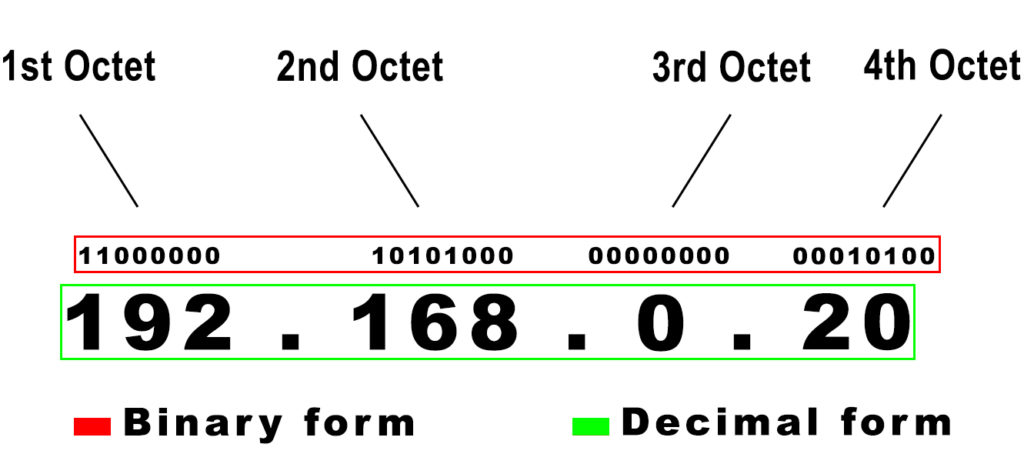 IPv4 also defines other rules of IP addressing. It categorizes all the available addresses into 5 classes. Each class is reserved for a different network size or a different purpose. Addresses that belong to classes A to C are used on networks, class D addresses are used for multicast, and class E for experiments.
IPv4 also defines other rules of IP addressing. It categorizes all the available addresses into 5 classes. Each class is reserved for a different network size or a different purpose. Addresses that belong to classes A to C are used on networks, class D addresses are used for multicast, and class E for experiments.

Since we have too many devices that can be connected to the internet and too few addresses that can be assigned to those devices (10+ billion vs 4.3 billion), the only way to make things work and keep IPv4 protocol alive was to introduce blocks of private addresses within the first three classes. You can see those blocks in the table given above.
Private addresses are designed for use on local area networks, like our home wi-fi networks or office networks. Private addresses are not used on the internet. For internet access, we have our routers. These interesting devices have two addresses – one private address (assigned by the manufacturer) and one public IP address (assigned by the ISP to our entire network).
Routers use their private addresses (default IP addresses or default gateways) to communicate with the devices connected to them and then use their public IP addresses to access the internet and answer to all the requests for internet access sent from our devices. So, all the devices connected to a single LAN (our wi-fi) have unique private IP addresses and use just one public IP address to access the internet.
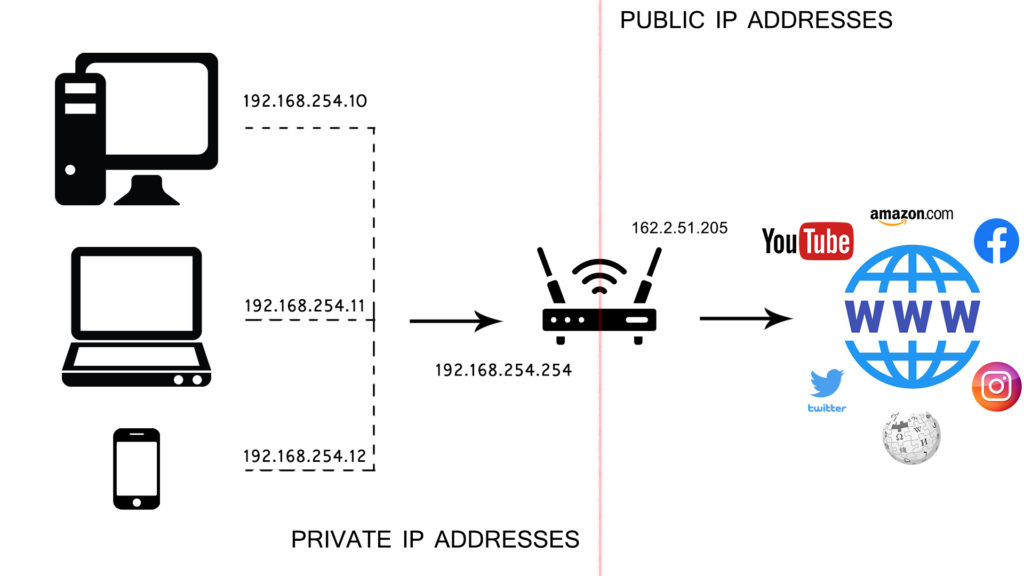
To sum things up – dedicated blocks of private IP addresses prolonged the life of IPv4 protocol by allowing an unlimited number of devices connected to different LANs to use the same private IP address. The introduction of private (and public) addresses created the situation in which multiple devices connected to the same LAN can use only one public address for internet access.
What Kind of Address is 192.168.0.20?
Based on what we’ve just said, you can conclude on your own what kind of address this is. It is a private address from a dedicated block of Class C private addresses.
As a private address, 192.168.0.20 can be assigned to your router as a default IP, it can be assigned to some other device as a default IP (access point, range extender, IP camera), or it can be assigned (by your router) to your PC or some other device that connects to your wi-fi (client IP).
Is 192.168.0.20 My Router’s Default Gateway?
This address, just like any private IP address, is a viable choice when it comes to default IP addresses. However, we haven’t heard of any router that uses 192.168.0.20 as a default IP.
Recommended Reading:
The thing is – even though every private address is a viable choice for a default IP, most manufacturers use the same few IP addresses, just because they are more convenient. They tend to use starting and ending addresses in a subnet. That’s why some addresses are more popular than others. Addresses like 192.168.0.1 and 192.168.0.254 are from the same subnet as 192.168.0.20 but are far more popular when it comes to default IP.
Other popular options are 192.168.1.1, 10.0.0.1, 192.168.1.254, etc.
What Devices Use 192.168.0.20 as a Default IP Address?
Our address is not used by routers, but there’re some IP cameras that use 192.168.0.20 as a default IP. The manufacturers that use this address are D-Link and TRENDnet. Below, you can see some of the devices using this address.
D-Link IP cameras: DCS-930L, DCS-936L, DCS-950, DCS-950G, DCS-G900
TRENDnet IP cameras: TV-IP100v3, TV-IP100W-Nv3, TV-IP100Wv3, TV-IP200v2
If you have one of the listed camera models, you can use this address to access camera settings, but only if the camera is connected directly to your PC/laptop via Ethernet cable. If the camera is installed through the app, then it may get some other IP address from your router, especially if your router and your camera have default IPs that come from different subnets.
Can This Address Be a Client IP Address?
Any private address, including 192.168.0.20, can be a client IP address. Routers are in charge of IP address assignment. They give IP addresses to every device connected to your wi-fi. But they don’t give them just any address – they give them one of the available addresses in the DHCP pool. The DHCP pool is a predefined scope of IP addresses. You can shrink or expand this scope by accessing your router’s user interface and playing with DHCP settings, but there’s one rule – your default IP and your DHCP pool must be in the same subnet.

If an IP address is assigned to your device automatically, the address is called dynamic. This term gives you information about the nature of the connection between the address and the device that uses that address. The device doesn’t get to use the address indefinitely – the address is just leased and will be brought back when you disconnect and the lease time expires. The next time you connect, you may get another address.
How to Assign 192.168.0.20?
If you want an address permanently assigned to your PC/printer/phone, you have to make it static. You can do that through your device’s settings or, more elegantly, through your router’s user interface by making a DHCP reservation. We will show you how to make a DHCP reservation using TP-Link’s TL-WR841N wireless router.
As always, the first thing to do is to open your browser, type in your default IP (192.168.0.1), and enter your default credentials (admin/admin) to log in.
Note: To assign 192.168.0.20 to some device as a static IP, you need a router that has a default IP that comes from the same subnet.
When you log in, go to the DHCP tab and check if the address you want to assign is inside the DHCP pool. If it’s not included, make an adjustment so that the address is inside the pool. On some routers, you may have to go to LAN settings to find DHCP settings.
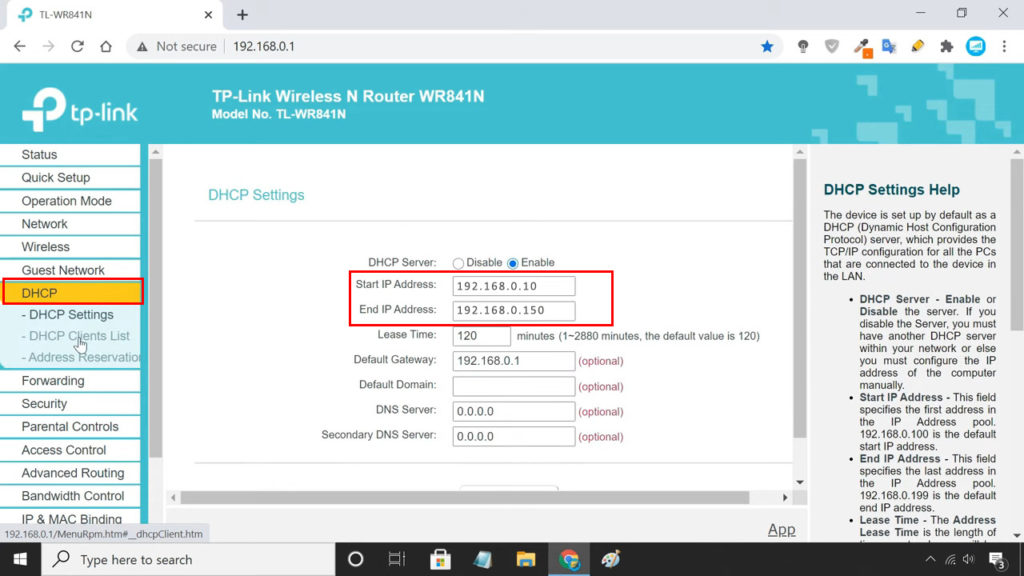
If the device you want to assign a static IP to is already connected, go to the DHCP client list to see the device’s MAC address. If the device is not connected, check the label on the device (or the user manual), and find the device’s MAC address.
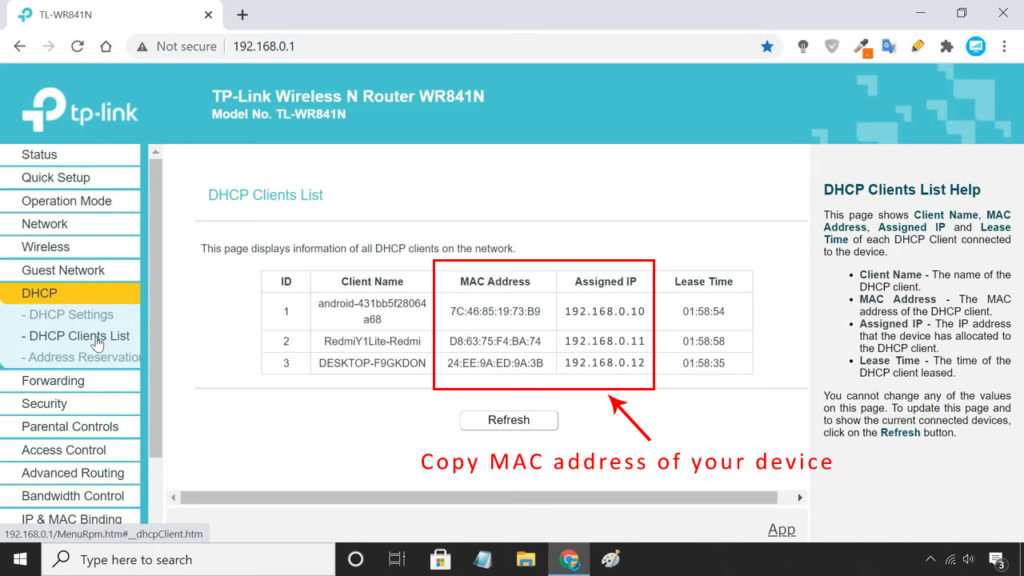
Finally, go to Address Reservation, and click on Add New.
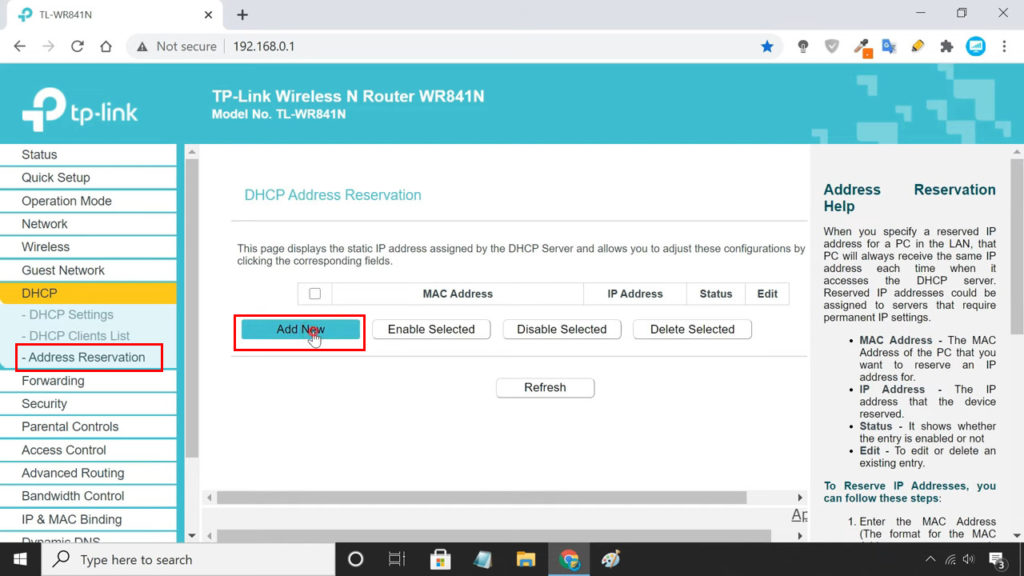
In the next window, you will have to enter the MAC address of your device, the address that you want to assign to it, enable DHCP reservation, and click on Save.
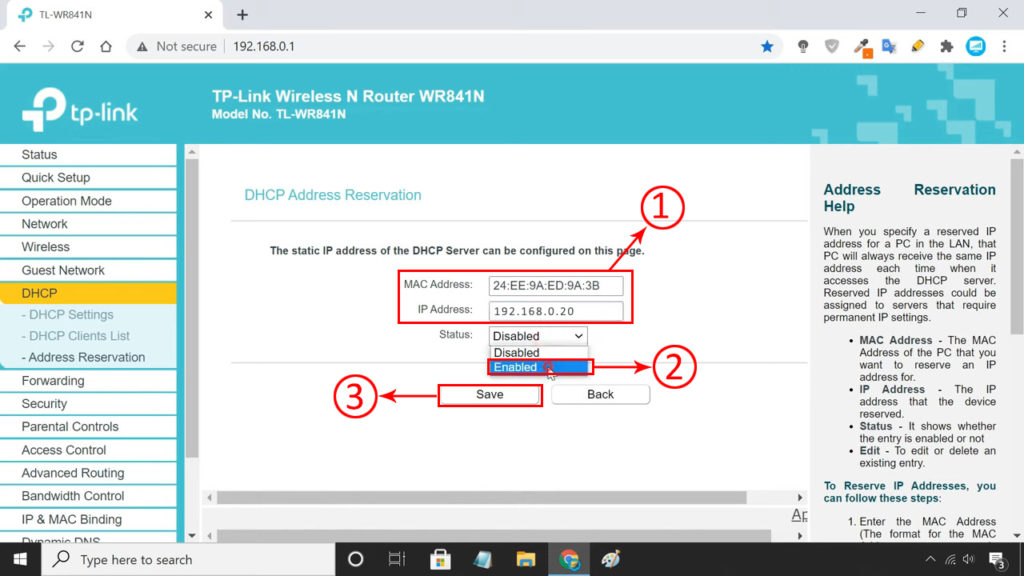
You will be redirected to the previous page, and your device will be listed as one of the devices with a static IP.
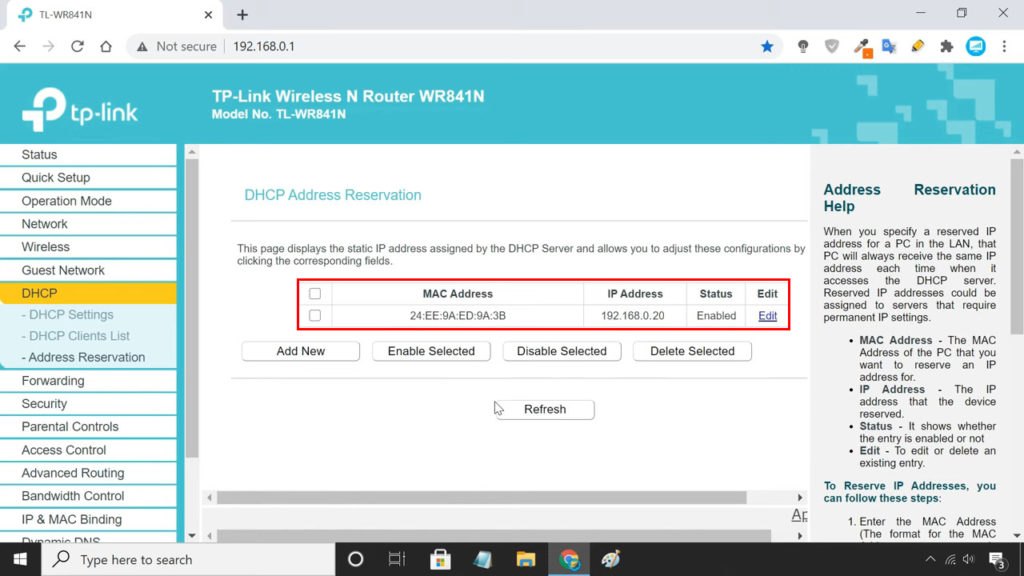

Hey, I’m Jeremy Clifford. I hold a bachelor’s degree in information systems, and I’m a certified network specialist. I worked for several internet providers in LA, San Francisco, Sacramento, and Seattle over the past 21 years.
I worked as a customer service operator, field technician, network engineer, and network specialist. During my career in networking, I’ve come across numerous modems, gateways, routers, and other networking hardware. I’ve installed network equipment, fixed it, designed and administrated networks, etc.
Networking is my passion, and I’m eager to share everything I know with you. On this website, you can read my modem and router reviews, as well as various how-to guides designed to help you solve your network problems. I want to liberate you from the fear that most users feel when they have to deal with modem and router settings.
My favorite free-time activities are gaming, movie-watching, and cooking. I also enjoy fishing, although I’m not good at it. What I’m good at is annoying David when we are fishing together. Apparently, you’re not supposed to talk or laugh while fishing – it scares the fishes.
